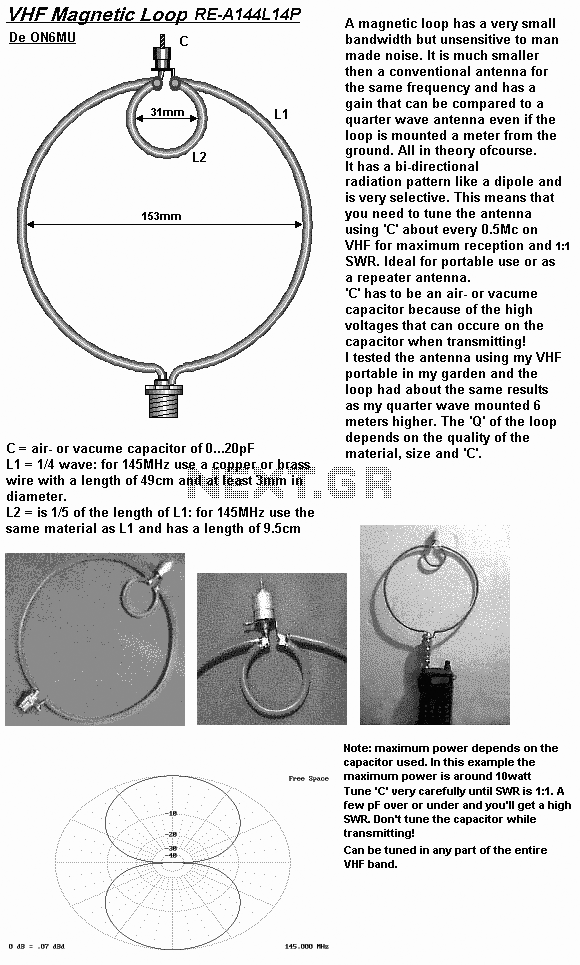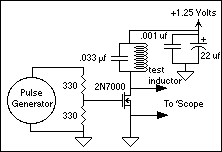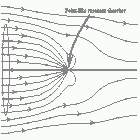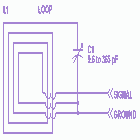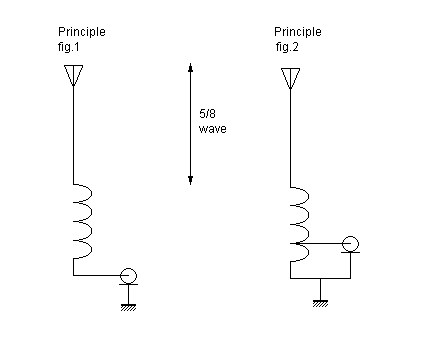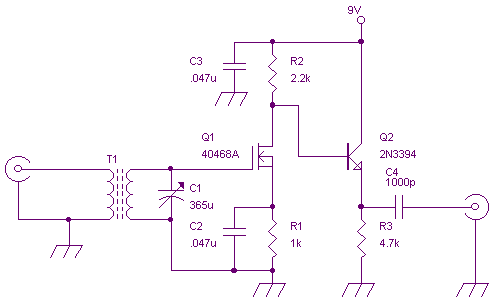
Antennas
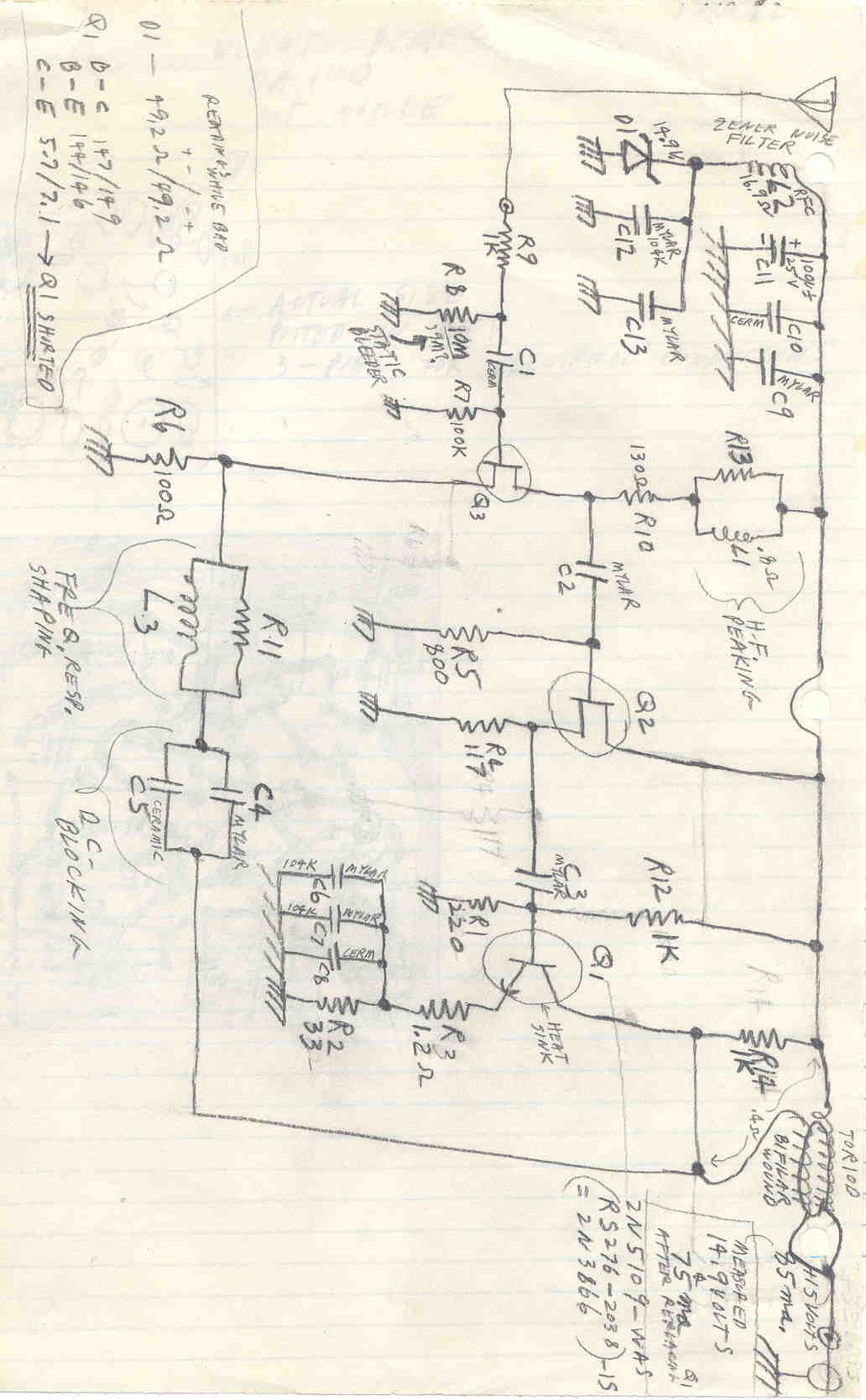
The antenna used for receiving or transmitting is a crucial component in a communication link. Its performance significantly influences the effectiveness of both the receiver and transmitter. Antennas are reciprocal, meaning an antenna designed for transmission can also function for reception. However, the objectives differ between these two functions. A receiving antenna aims to provide a high signal-to-noise ratio, while a transmitting antenna should efficiently radiate energy toward the receiver. For example, a loop antenna may excel as a receiving antenna for broadcast band radios but perform poorly when used for transmission. Transmitting into an active receiving antenna can damage it. The B&W Broadband Folded Dipole Antenna (ASW-90), U.S. Patent 4423423, serves as an excellent receiving antenna for broadband signals, such as chirp sounders. This design, also known as a T2FD, experiences a rapid decline in transmission efficiency below 40 meters. The Hy-Gain HA-4000, 18TD, Collins TD-1, and 637T-2 are examples of dipoles constructed using two steel tape measures, allowing for quick deployment. The 637T-2 features two reels with antenna wire, a center support hole on top, and a type N(f) connector at the bottom, making it suitable for NVIS operations. The GRC-106, a 15-foot whip antenna, is sold under various names and is intended for transmitting applications due to its insulating sleeve. Additionally, a Tape Whip Adapter is available to connect military antennas with a 5/16-24 male thread to 3/8-24 ham, CB, and commercial antenna bases. Antenna elevation is critical for performance, while power output is generally less significant, with most radios requiring only a few watts for effective communication. The Eggbeater antenna provides circularly polarized patterns for satellite communication and vertical polarization for VHF stations. FM stations may utilize horizontal polarization for stationary receivers and vertical polarization for mobile antennas, often balancing power distribution based on their target audience. The military utilizes the 200 to 400 MHz band for aircraft and ground troop communications. The advent of cable companies utilizing C-band receivers prompted a shift towards homebrew systems, as the cost of parabolic dishes and low-noise amplifiers increases with diameter and performance. The optimal focal length-to-diameter ratio (F/D) for maximum gain in parabolic antennas is approximately 0.45, with most TVRO antennas designed with this flat shape. The best gain-to-noise ratio (G/T) occurs at an F/D of 0.3, which is a crucial specification for receivers aiming for optimal performance.
Antenna design and selection play a pivotal role in communication systems, impacting both range and clarity of signals. The choice of antenna type is determined by the specific requirements of the application, including frequency range, polarization, and environmental considerations. For instance, the B&W Broadband Folded Dipole Antenna is particularly effective for broadband applications due to its ability to handle a wide range of frequencies while maintaining a high level of efficiency. This antenna's design minimizes losses and maximizes the effective radiated power, making it suitable for applications like chirp sounders.
In contrast, the use of a loop antenna for reception highlights the importance of matching the antenna type to its intended function. While loop antennas excel in receiving applications, their inefficiency in transmitting can lead to significant losses, emphasizing the need for careful consideration in antenna selection.
The various dipole antennas, including those constructed from steel tape measures, showcase the versatility and adaptability of antenna designs. These antennas can be quickly assembled and deployed, making them ideal for temporary setups, such as NVIS operations, where rapid deployment is essential.
Furthermore, the evolution of communication technologies has led to innovations in antenna design, such as the Eggbeater antenna, which provides unique polarization characteristics beneficial for satellite communications. This adaptability illustrates the importance of understanding the operational environment and the specific communication needs when selecting an antenna.
The discussion of FM radio polarization strategies highlights the necessity for broadcasters to consider their target audiences and the environments in which their signals will be received. By balancing horizontal and vertical polarization, FM stations can optimize their reach and effectiveness, ensuring that they meet the needs of both stationary and mobile listeners.
The analysis of parabolic antennas further emphasizes the importance of design parameters like the F/D ratio in achieving optimal performance. The relationship between antenna cost and performance has shifted towards smaller, more efficient designs, reflecting advancements in technology and materials. This trend is crucial for both commercial and amateur applications, where performance and cost-effectiveness are paramount.
Overall, the intricate relationship between antenna design, function, and application underscores the importance of careful planning and selection in the field of electronics and communication engineering.The antenna used for either receiving or transmitting is a vital element in the communication link. In most cases the antenna has a great deal to do with how well the receiver or transmitter works. Antennas are reciprocal, meaning that an antenna designed for transmitting will work for receiving. A passive receiving antenna will also work for tran smitting. BUT the goals are different for reception and transmission. In general a receiving antenna should provide a good signal to noise ratio. In general a transmitting antenna should radiate energy as efficiently as possible in the direction of the receiver. A loop may make a great receiving antenna for a broadcast band radio but would be terrible as a transmitting antenna.
Transmitting into an active receive antenna will let the smoke out of it. The B&W Broadband Folded Dipole Antennas ( ASW-90 ) U. S. Patent 4423423 is an excellent receiving antenna for broad band signals like chirp sounders. This design is also called a T2FD. The efficiency for transmission goes down rapidly below 40 meters. Hy-Gain HA-4000, 18TD, Collins TD-1, 637T-2 - a dipole made with two steel tape measures as the center part. You pull out the tapes, marked in the metric system and you`re good to go 637T-2 has two reels with antenna wire on each.
Center support hole on top and type N(f) connector on the bottom. Used to quickly and easily make a dipole for NVIS ops. GRC-106 15 foot whip - photo - in CW-206 bag - Fair was selling these as a GRA-50, but they are for some transmitting application because of the insulating sleeve for the lower whip (ms-11x whip sections. Not the receive only antenna for the R-442. ) Tape Whip Adapter - Accepts 5/16-24 male thread on mil antennas and screws into 3/8-24 ham, CB, commercial antenna bases.
The 5/16-24 female thread is deep enough to allow the AB-591 antenna base to be used. Antenna elevation is the key factor for this band. Power is not that important. Most radios have a few watts of output power and that`s all that`s needed for normal links. Eggbeater - has a circularly polarized pattern going up which is good for working satellites and has vertical polarization in the direction of the horizon which is good for working most VHF stations. See Brooke`s Military Information/Equipment for more on this one. FM Radio - FM stations can use horizontal polarization to reach receivers in stationary locations with indoor or outdoor antennas.
They can also use vertical polarization to reach automobile whip antennas. Most stations divide their power between the two depending on their target audience, commuters, at work, commercial use, etc. A vertical antenna may work better at your home if the station you want to hear is targeting commuters.
This is the military 200 (or 225) to 400 MHz band used by aircraft in the AM mode, for Line Of Sight coms by ground troops, and used for linking to satellites. When it was discovered that the cable companies were getting their programming by means of C-band (3.
7 to 4. 2 GHz downlink) receivers there was a move to make home brew systems. The cost of a parabolic dish goes up as some power of the diameter. The cost of a low noise amplifier goes up as some function of how low its noise figure is. When the sum of the antenna cost and the low noise amplifier cost are plotted the curve has a sweet spot. Over time the sweet spot has moved in the direction of smaller diameter antennas and better low noise amplifiers.
The best F/D (focal length of the antenna divided by it`s diameter) for a parabolic antenna to have maximum gain is about 0. 45, so most TVRO antennas were built with this rather flat shape. The best G/T (gain divided by noise) is at an F/D of 0. 3. This is really the key specification since what the receiver wants is the best possible G/T. I got one of the antennas from Stanford used for a study of the Sun (they had 16 in a N-S line and 16 in an E-W line all phase match
🔗 External reference
Antenna design and selection play a pivotal role in communication systems, impacting both range and clarity of signals. The choice of antenna type is determined by the specific requirements of the application, including frequency range, polarization, and environmental considerations. For instance, the B&W Broadband Folded Dipole Antenna is particularly effective for broadband applications due to its ability to handle a wide range of frequencies while maintaining a high level of efficiency. This antenna's design minimizes losses and maximizes the effective radiated power, making it suitable for applications like chirp sounders.
In contrast, the use of a loop antenna for reception highlights the importance of matching the antenna type to its intended function. While loop antennas excel in receiving applications, their inefficiency in transmitting can lead to significant losses, emphasizing the need for careful consideration in antenna selection.
The various dipole antennas, including those constructed from steel tape measures, showcase the versatility and adaptability of antenna designs. These antennas can be quickly assembled and deployed, making them ideal for temporary setups, such as NVIS operations, where rapid deployment is essential.
Furthermore, the evolution of communication technologies has led to innovations in antenna design, such as the Eggbeater antenna, which provides unique polarization characteristics beneficial for satellite communications. This adaptability illustrates the importance of understanding the operational environment and the specific communication needs when selecting an antenna.
The discussion of FM radio polarization strategies highlights the necessity for broadcasters to consider their target audiences and the environments in which their signals will be received. By balancing horizontal and vertical polarization, FM stations can optimize their reach and effectiveness, ensuring that they meet the needs of both stationary and mobile listeners.
The analysis of parabolic antennas further emphasizes the importance of design parameters like the F/D ratio in achieving optimal performance. The relationship between antenna cost and performance has shifted towards smaller, more efficient designs, reflecting advancements in technology and materials. This trend is crucial for both commercial and amateur applications, where performance and cost-effectiveness are paramount.
Overall, the intricate relationship between antenna design, function, and application underscores the importance of careful planning and selection in the field of electronics and communication engineering.The antenna used for either receiving or transmitting is a vital element in the communication link. In most cases the antenna has a great deal to do with how well the receiver or transmitter works. Antennas are reciprocal, meaning that an antenna designed for transmitting will work for receiving. A passive receiving antenna will also work for tran smitting. BUT the goals are different for reception and transmission. In general a receiving antenna should provide a good signal to noise ratio. In general a transmitting antenna should radiate energy as efficiently as possible in the direction of the receiver. A loop may make a great receiving antenna for a broadcast band radio but would be terrible as a transmitting antenna.
Transmitting into an active receive antenna will let the smoke out of it. The B&W Broadband Folded Dipole Antennas ( ASW-90 ) U. S. Patent 4423423 is an excellent receiving antenna for broad band signals like chirp sounders. This design is also called a T2FD. The efficiency for transmission goes down rapidly below 40 meters. Hy-Gain HA-4000, 18TD, Collins TD-1, 637T-2 - a dipole made with two steel tape measures as the center part. You pull out the tapes, marked in the metric system and you`re good to go 637T-2 has two reels with antenna wire on each.
Center support hole on top and type N(f) connector on the bottom. Used to quickly and easily make a dipole for NVIS ops. GRC-106 15 foot whip - photo - in CW-206 bag - Fair was selling these as a GRA-50, but they are for some transmitting application because of the insulating sleeve for the lower whip (ms-11x whip sections. Not the receive only antenna for the R-442. ) Tape Whip Adapter - Accepts 5/16-24 male thread on mil antennas and screws into 3/8-24 ham, CB, commercial antenna bases.
The 5/16-24 female thread is deep enough to allow the AB-591 antenna base to be used. Antenna elevation is the key factor for this band. Power is not that important. Most radios have a few watts of output power and that`s all that`s needed for normal links. Eggbeater - has a circularly polarized pattern going up which is good for working satellites and has vertical polarization in the direction of the horizon which is good for working most VHF stations. See Brooke`s Military Information/Equipment for more on this one. FM Radio - FM stations can use horizontal polarization to reach receivers in stationary locations with indoor or outdoor antennas.
They can also use vertical polarization to reach automobile whip antennas. Most stations divide their power between the two depending on their target audience, commuters, at work, commercial use, etc. A vertical antenna may work better at your home if the station you want to hear is targeting commuters.
This is the military 200 (or 225) to 400 MHz band used by aircraft in the AM mode, for Line Of Sight coms by ground troops, and used for linking to satellites. When it was discovered that the cable companies were getting their programming by means of C-band (3.
7 to 4. 2 GHz downlink) receivers there was a move to make home brew systems. The cost of a parabolic dish goes up as some power of the diameter. The cost of a low noise amplifier goes up as some function of how low its noise figure is. When the sum of the antenna cost and the low noise amplifier cost are plotted the curve has a sweet spot. Over time the sweet spot has moved in the direction of smaller diameter antennas and better low noise amplifiers.
The best F/D (focal length of the antenna divided by it`s diameter) for a parabolic antenna to have maximum gain is about 0. 45, so most TVRO antennas were built with this rather flat shape. The best G/T (gain divided by noise) is at an F/D of 0. 3. This is really the key specification since what the receiver wants is the best possible G/T. I got one of the antennas from Stanford used for a study of the Sun (they had 16 in a N-S line and 16 in an E-W line all phase match
🔗 External reference
